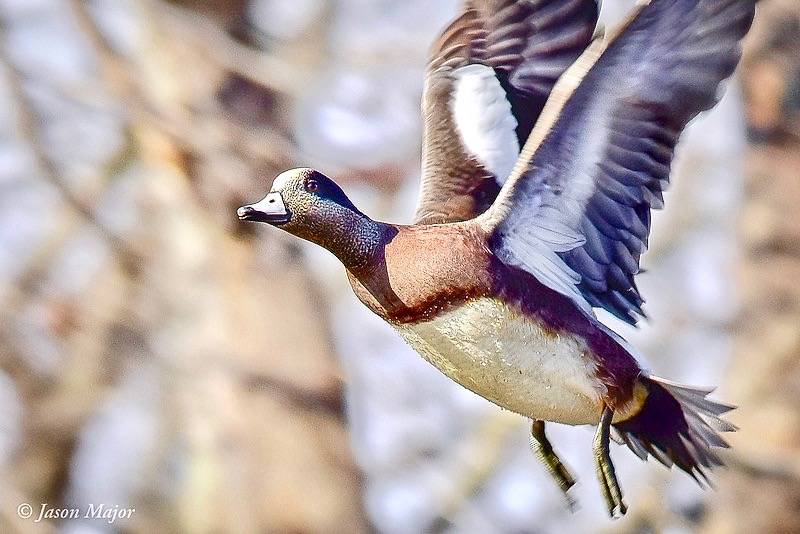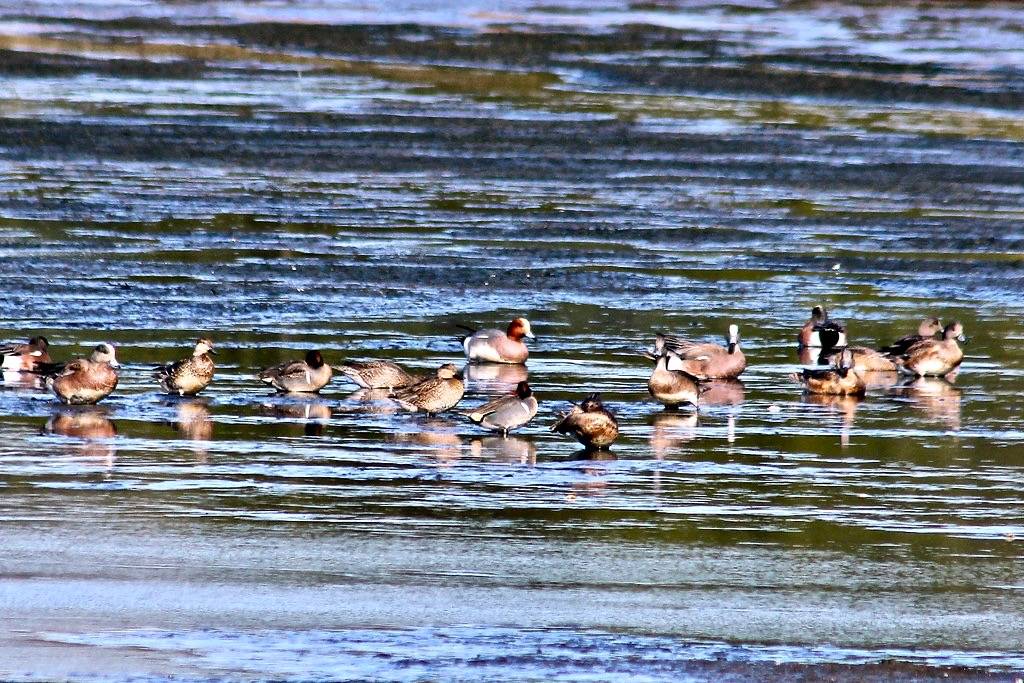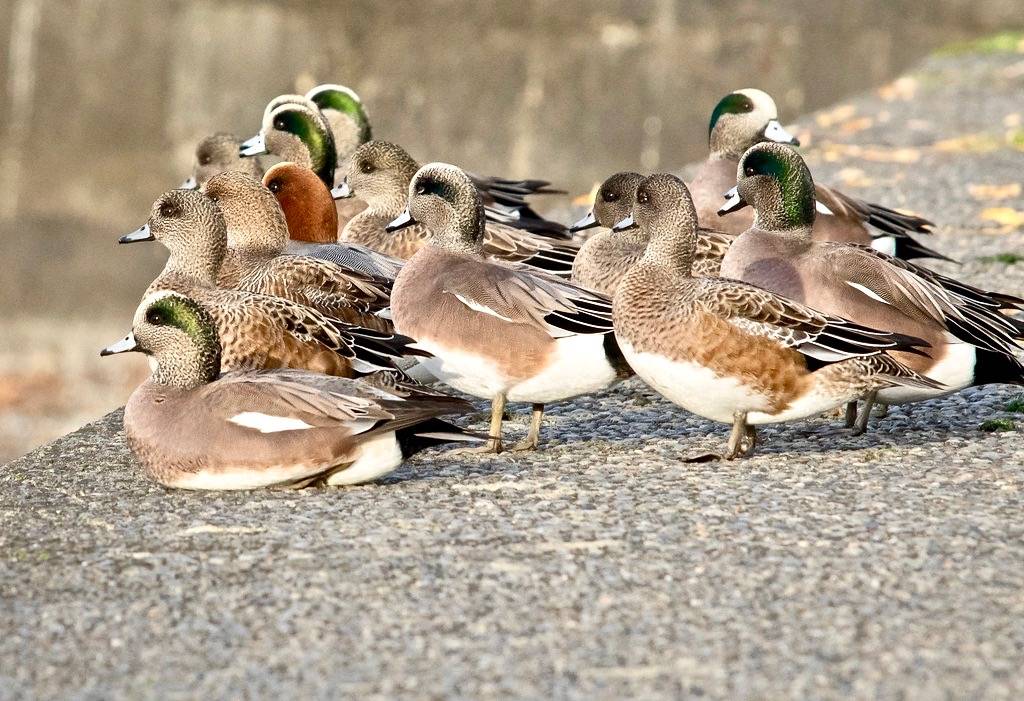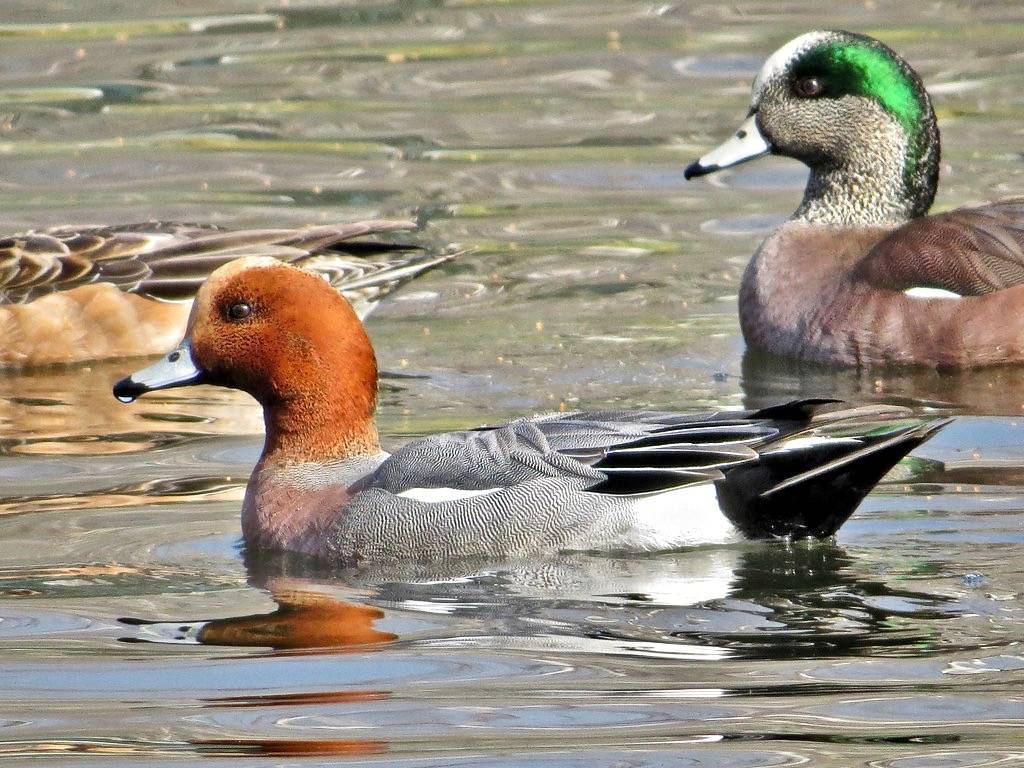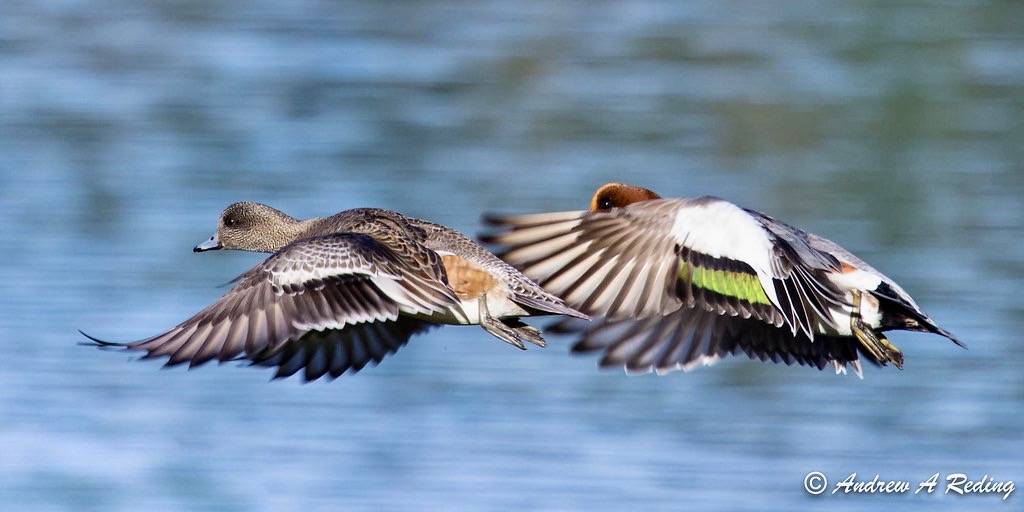American Wigeon
At Salter Grove, American Wigeons can be seen dabbling on both sides of the causeway from early December to early April. There is ample opportunity to watch them in both North and South Coves as they engage in courtship behavior. Mate selection generally occurs while American Wigeons are on their wintering grounds and by February, newly formed pairs can be seen mixed in with as yet unpaired individuals.
The American Wigeon breeds in wetlands near boreal forest and subarctic river deltas in Alaska and Canada. It also nests in the northwestern states of Colorado, the Dakotas, Minnesota, Oregon, and Washington. It winters south of its breeding grounds and can be found all the way to northwestern South America.
The male is striking with the brilliant green mask over the eyes and the white patch on its crown, giving rise to its other common name Baldpate. The female is brown all over with a smudgy looking area around the eyes. Occasionally, a raft of wintering American Wigeons may be punctuated by the bright rufous head of the Eurasian Wigeon. Hybrids of the two species have been observed.
Most dabbling ducks feed on plant matter in shallow water but the American Wigeon will also feed in deeper water where it often steals food uprooted by other dabbling birds. It is able to feed in agricultural fields and on lawns where its short but stout goose-like bill is adept in picking up waste grain or in prying loose grass roots.

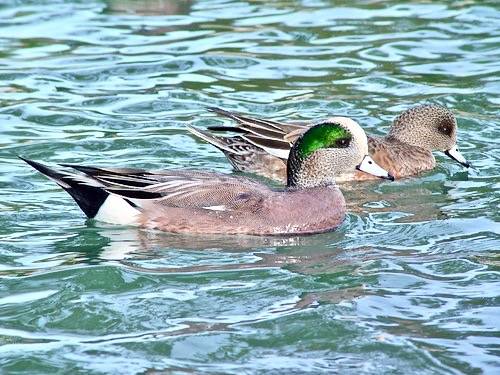
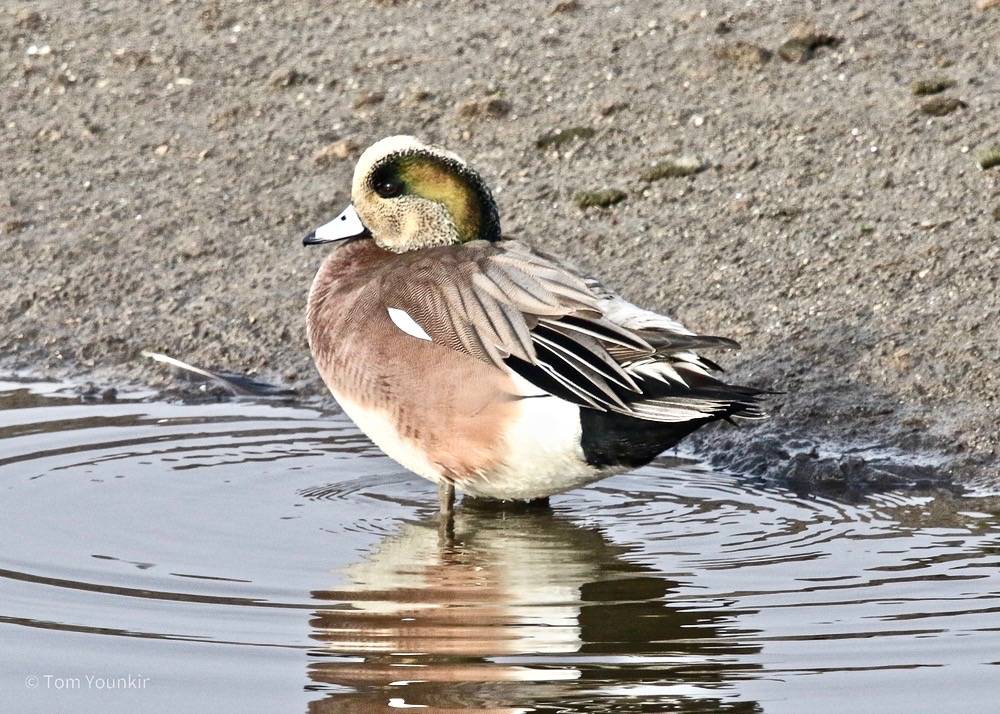
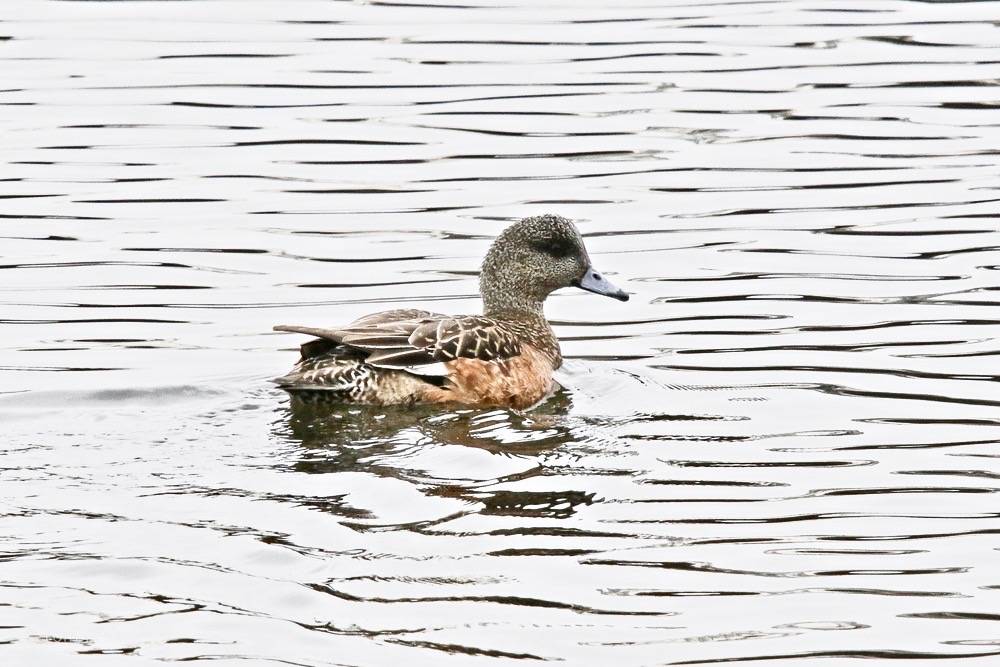
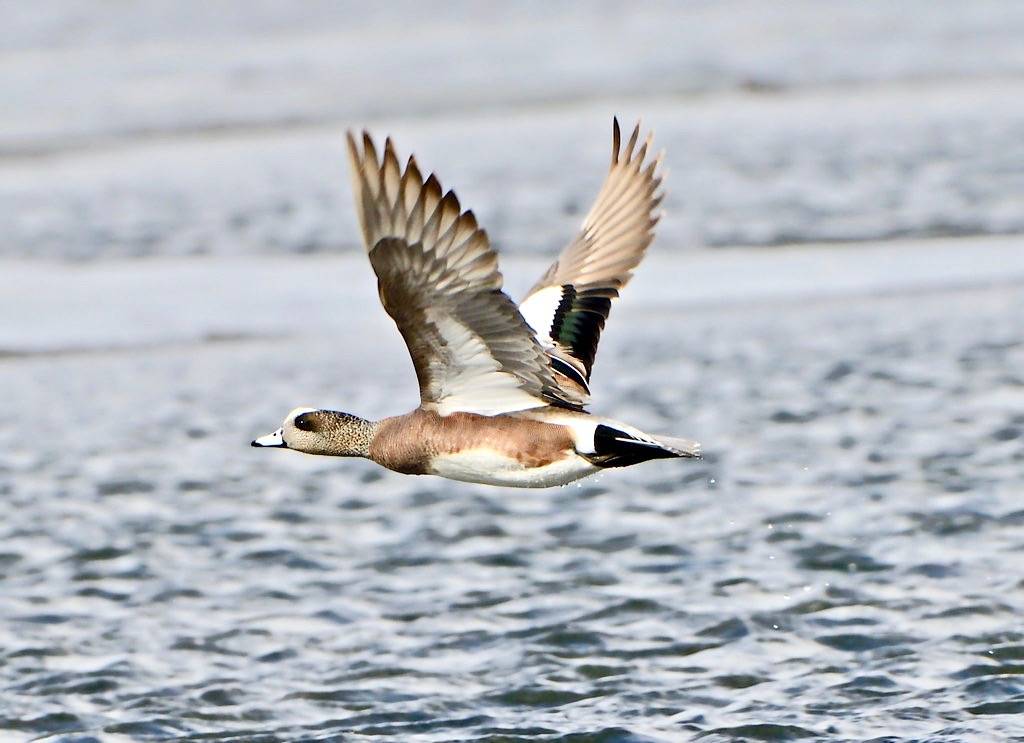
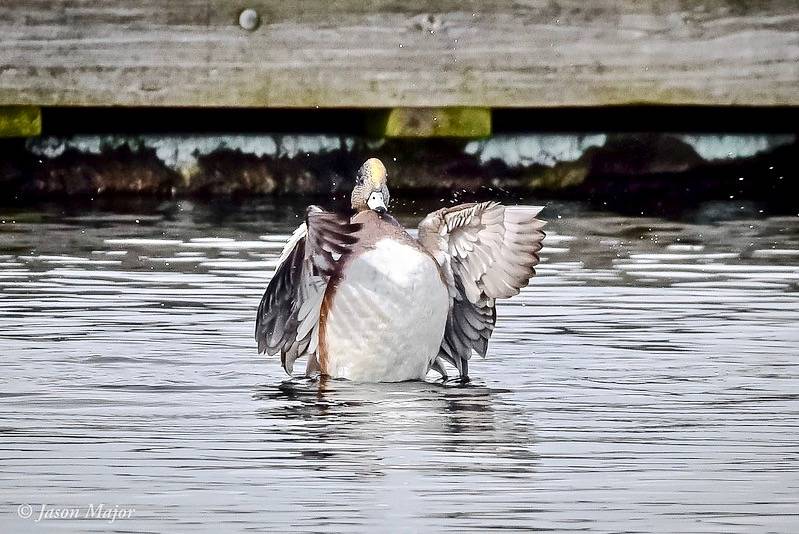
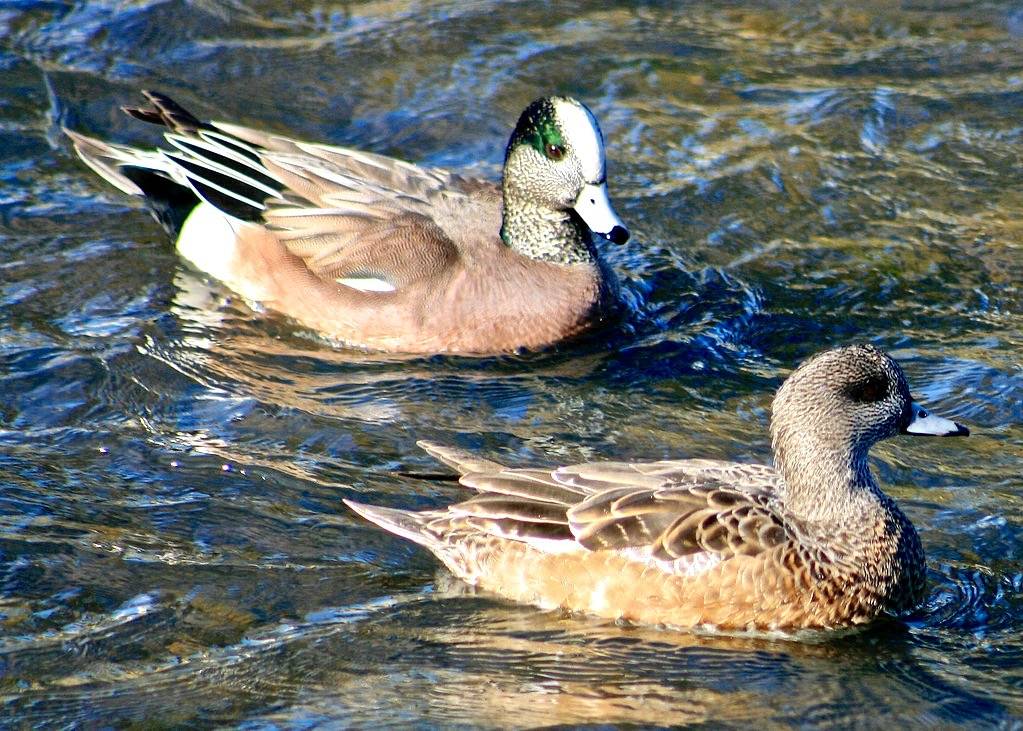
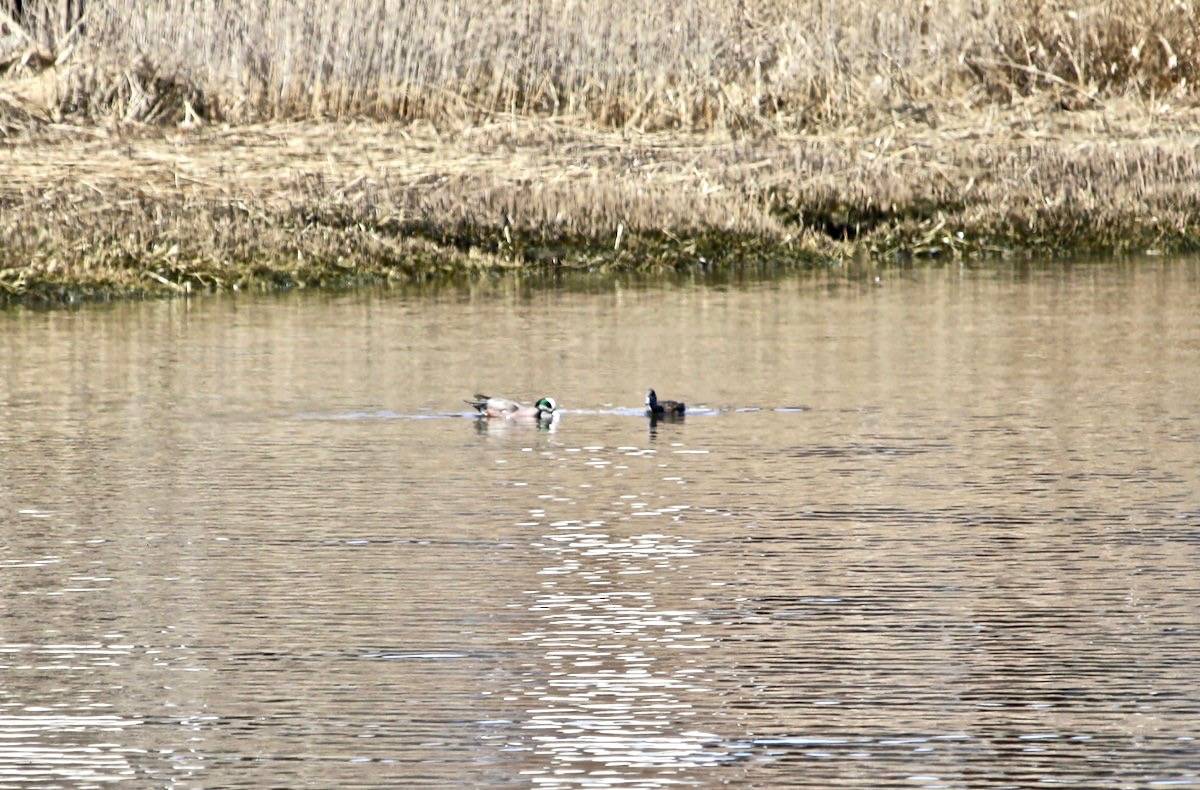
 07-18-19.jpg?w=350?blur=10)
